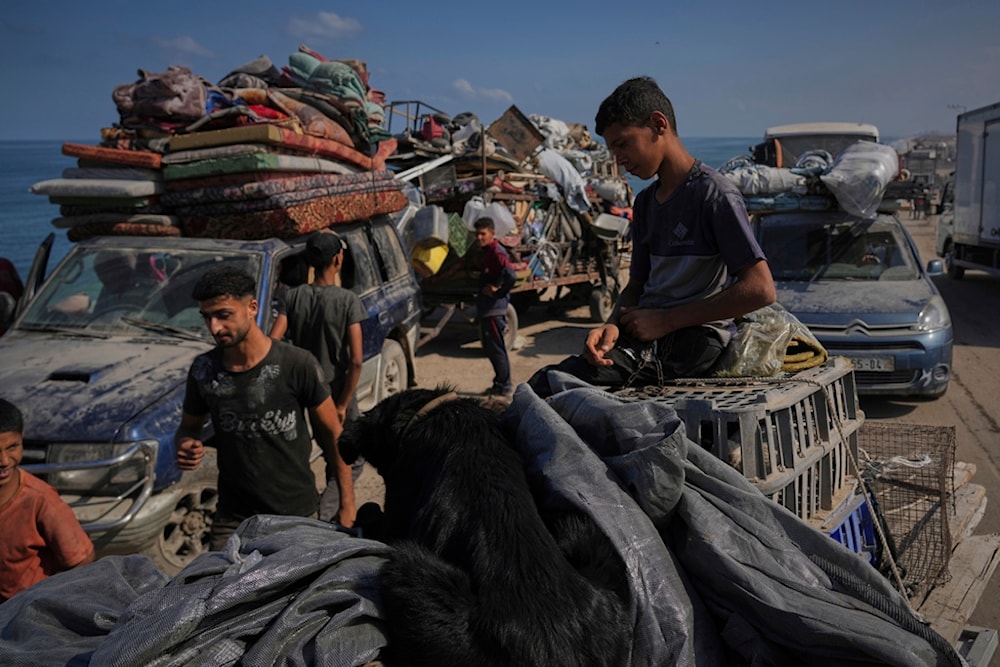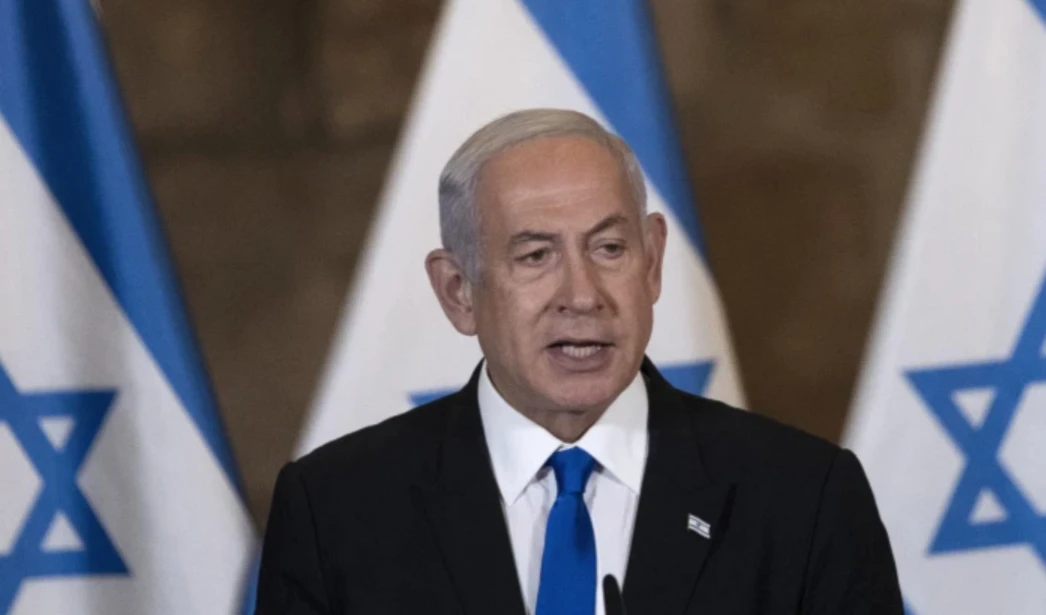Gaza City faces heavy fire as Netanyahu confirms ground invasion
Families in Gaza City flee shattered homes as Netanyahu confirms a ground assault, deepening Palestinian hardship amid relentless strikes.
-

Forcibly displaced Palestinians carry their belongings as they evacuate northern Gaza along the coastal road toward the south, as “Israel” announced an expanded operation in Gaza City, Tuesday, September 16, 2025. (AP)
Israeli Prime Minister Benjamin Netanyahu on Tuesday confirmed a ground incursion into Gaza City, according to Yedioth Ahronoth.
The newspaper quoted an official saying the invasion had begun on the city’s outskirts, following intense Israeli airstrikes and the demolition of high-rises in recent days. The official noted that the incursion would proceed gradually, in stages.
However, the announcement of a new military operation is largely an Israeli media posturing, as ground actions have reportedly been underway for weeks, with incursions into the Tel al-Sabra and al-Zaytoun neighborhoods. The Israeli invading units destroyed parts of these areas before temporarily withdrawing, according to Al Mayadeen’s correspondent.
Following that withdrawal, Israeli invading units moved into Jabalia and al-Nuzlah, then evacuated al-Saftawi. They are now operating in the Sheikh Radwan and Abu Askandar neighborhoods.
The army continues its gradual advance using a “fire push” tactic, targeting neighborhoods such as Al-Zarqa and Al-Nafaq with heavy bombardment while striking high-rise residential towers to intensify mass displacement.
IOF positions in Gaza City
Al Mayadeen’s correspondent reported that Israeli ocucpation forces are currently concentrated in three main areas of Gaza City:
1. Sheikh Radwan Neighborhood, Northwest Gaza
Troops are positioned around the Sheikh Radwan pool, having advanced from Jabalia’s al-Nuzlah and al-Zarqa neighborhoods over the past weeks. The Israeli occupation has used a displacement by fire strategy, relying on limited armored maneuvers to pressure residents into mass evacuations.
This tactic has cleared wide areas, including al-Saftawi, Abu Askandar, and parts of al-Jalaa neighborhood extending to al-Jisr and al-Ayoun, which remain heavily shelled by aircraft and artillery. Explosive robots have also been deployed from these positions to speed forced displacement.
2. Coastal Strip, Northwest Gaza
Israeli forces have carried out limited coastal incursions after closing the Zikim crossing, maintaining heavy bombardment on al-Karama and al-Sudaniya.
Reports describe a backward exodus from these areas amid brutal nighttime raids and harrowing massacres in the General Security zone. Israeli occupation forces continue to maintain an intense fire presence over al-Karama, al-Sudaniya, the General Security area, al-Maqousi, and al-Shati camp.
3. South of Tel al-Hawa, Southern Gaza City
Israeli tanks have advanced near the al-Na’im oil station along Dahdouh Street, close to the Netzarim Axis. The army is using the same tactics as in Sheikh Radwan, deploying and detonating large numbers of armored explosive vehicles, several of which were set off over the past two days.
Fire coverage extends to Street 8, al-Khor Square, Dahdouh Square, Sheikh Ajlin, and nearby areas, prompting mass displacement. Israeli occupation forces are now only a few hundred meters from the western coastal strip of Gaza City.
Across all three sectors, Israeli forces are pressing forward with a slow, methodical advance, backed by relentless air and artillery strikes. With large swaths of residential buildings reduced to rubble, residents say the rumble of military vehicles echoes through the night.
Concurrently, mass displacement continues along al-Rashid Street, which is congested and often blocked for hours by the large number of evacuees.
Israeli estimates suggest that more than 850,000 Palestinians remain inside Gaza City, many unable to leave due to lack of transport or funds, with relocation costs reportedly reaching about $1,000 per family.

 4 Min Read
4 Min Read









